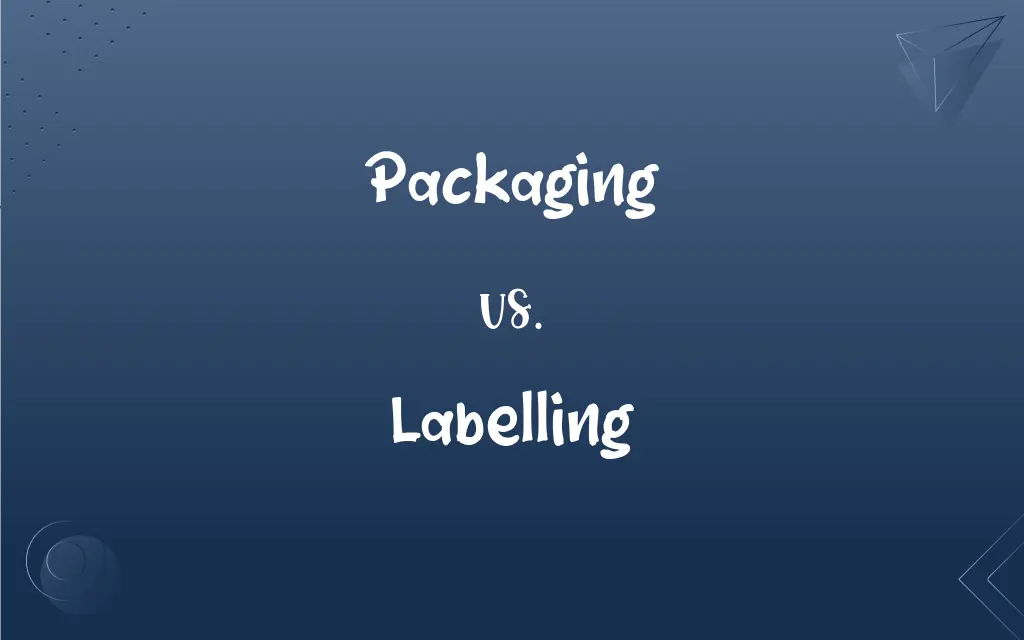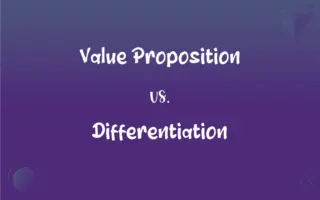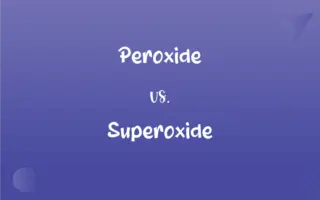Packaging vs. Labelling: What's the Difference?
Edited by Aimie Carlson || By Janet White || Published on November 28, 2023
Packaging involves enclosing or protecting products for distribution, while labelling is about attaching information to a product.

Key Differences
Packaging refers to the process of designing and producing containers or wrappers for products. Labelling, however, involves attaching tags, stickers, or printed information directly onto the product or packaging.
The primary function of packaging is to protect and preserve products, ensuring they reach consumers in good condition. While, labelling serves to communicate information about the product, including ingredients, usage, and manufacturer details.
Packaging can also play a role in marketing and branding, attracting customers through design and aesthetics. On the other hand, labels not only provide necessary information but can also be part of branding with logos and trademarks.
Materials used in packaging vary widely, from plastic and cardboard to glass and metal. Whereas, labelling materials are typically paper, plastic, or metal with printed text and graphics.
In terms of regulations, packaging must adhere to safety and environmental standards, while labelling is often subject to strict truth-in-advertising laws and ingredient disclosure requirements.
ADVERTISEMENT
Comparison Chart
Purpose
Protect and preserve products
Provide product information
Role in Marketing
Attracts customers, brand identity
Displays logos, trademarks, information
Materials Used
Plastic, cardboard, glass, etc.
Paper, plastic, metal with print
Regulatory Focus
Safety, environmental standards
Advertising laws, ingredient disclosure
Examples
Bottle for beverages, box for electronics
Nutritional information on food, barcodes
ADVERTISEMENT
Packaging and Labelling Definitions
Packaging
The process of enclosing products for distribution, sale, and use.
The delicate glassware was secured with robust packaging for safe shipping.
Labelling
Use of tags, stickers, or prints to convey information to the consumer.
The product's labelling featured a barcode and price information.
Packaging
The selection of materials for enclosing a product.
The company chose recyclable materials for its product packaging.
Labelling
A compliance measure to meet legal disclosure requirements.
The labelling on the medicine included dosage and side effect information.
Packaging
Packaging involves designing and producing containers or wrappers.
The new packaging design made the product more appealing on the shelf.
Labelling
Labelling involves displaying product details like ingredients and manufacturer.
The food product's labelling listed all the organic ingredients used.
Packaging
Packaging can be a tool for branding and marketing.
The eco-friendly packaging aligned with the brand's sustainable image.
Labelling
Attaching information about a product on its package or directly on it.
The labelling included instructions for use and safety warnings.
Packaging
A method to protect products from damage during transportation.
Effective packaging ensured the electronics were undamaged in transit.
Labelling
Part of branding, featuring logos and trademarks on labels.
The brand's iconic logo was prominently displayed on the product's labelling.
Packaging
The act, process, industry, art, or style of packing.
Labelling
An item used to identify something or someone, as a small piece of paper or cloth attached to an article to designate its origin, owner, contents, use, or destination.
Packaging
Material used for making packages.
Labelling
A descriptive term; an epithet.
Packaging
The manner in which something, such as a proposal or product, or someone, such as a candidate or author, is presented to the public.
Labelling
A distinctive name or trademark identifying a product or manufacturer, especially a recording company.
Packaging
Present participle of package
Labelling
(Architecture) A molding over a door or window; a dripstone.
Packaging
The act of packing something.
Labelling
(Heraldry) A figure in a field consisting of a narrow horizontal bar with several pendants.
Packaging
The materials used to pack something.
Labelling
(Chemistry) See tracer.
Packaging
The industry that produces such material.
Labelling
To attach a label to
Labeled the jars before storing them.
Packaging
(by extension) The manner in which a person or product is promoted.
Labelling
To identify or designate with a descriptive term; describe or classify
"He missed two crucial penalty kicks ... and was labeled a loser by the previously loyal British press" (Phil Ball).
Packaging
The business of packaging;
The packaging of new ideas
Packaging for transport
Labelling
(Chemistry) To add a tracer to (a compound).
Packaging
A message issued in behalf of some product or cause or idea or person or institution
Labelling
Present participle of label.
Packaging
Material used to make packages
Labelling
Alternative form of labeling
FAQs
What is labelling?
Attaching information to a product or its package.
What information is included in labelling?
Product ingredients, usage instructions, and manufacturer details.
Can packaging be environmentally friendly?
Yes, using sustainable and recyclable materials.
What is packaging?
Enclosing or protecting products for distribution and sale.
What materials are used in packaging?
Various, including plastic, cardboard, glass, and metal.
Are there standards for packaging design?
Yes, often related to safety, durability, and environmental impact.
How should allergens be indicated in labelling?
Clearly and conspicuously, as per food safety regulations.
Does packaging contribute to product cost?
Yes, both material and design aspects can impact cost.
How does packaging affect branding?
Packaging design can enhance brand identity and appeal to consumers.
What is the importance of expiry dates in labelling?
To inform consumers about product freshness and safety.
Why is packaging important?
For product protection, transportation, and marketing.
How do labels communicate product authenticity?
Through official logos, trademarks, and certification seals.
How can packaging be optimized for e-commerce?
By ensuring durability and reducing size for shipping efficiency.
Is labelling legally required?
Yes, for most products, especially food, medicines, and chemicals.
What are common labelling materials?
Paper, plastic, or metal with printed text and graphics.
Is nutritional information mandatory in food labelling?
In most regions, yes, it's a legal requirement.
What role does labelling play in consumer decisions?
It provides essential information that influences purchasing choices.
What is the purpose of a barcode in labelling?
For tracking, inventory management, and pricing.
Can packaging be a marketing tool?
Absolutely, through attractive and unique design elements.
What is the impact of packaging on storage and logistics?
It determines space usage, shelf life, and transportation needs.
About Author
Written by
Janet WhiteJanet White has been an esteemed writer and blogger for Difference Wiki. Holding a Master's degree in Science and Medical Journalism from the prestigious Boston University, she has consistently demonstrated her expertise and passion for her field. When she's not immersed in her work, Janet relishes her time exercising, delving into a good book, and cherishing moments with friends and family.
Edited by
Aimie CarlsonAimie Carlson, holding a master's degree in English literature, is a fervent English language enthusiast. She lends her writing talents to Difference Wiki, a prominent website that specializes in comparisons, offering readers insightful analyses that both captivate and inform.


































































